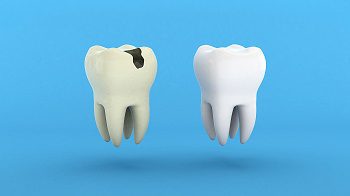What are Dental Inlays and Onlays and How Do They Work?
2022-03-20
Likely you are aware that tooth decay requires a visit to the dentist. Instead of a cavity or crown, your dentist may recommend and tell you what are dental inlays and onlays? And here is all the hows and whys of it.
Why Not Use A Dental Crown?
A dental crown is recommended to restore structural damage to the tooth in some circumstances. If you have a large cavity, inlays and onlays may be options.
Why Not Use Conventional Fillings?
Composite fillings and conventional fillings may shrink over time. Inlays and onlays do not shrink, making them incredibly durable.
Why Opt For Inlays And Onlays?

When a filling isn't adequate, dentists employ dental inlays and onlays as a temporary fix. A dental inlay or onlay can save a tooth's healthy area while permitting normal chewing. An inlay is used to repair cavities that have not reached the tooth's core. An onlay is utilized to repair the damage that extends beyond the tooth's center. Inlays and onlays are beneficial because they preserve natural tooth structure. So now you can clean your teeth. Finally, inlays and onlays can endure up to 30 years with proper care!
How Do Inlays And Onlays Work?
An inlay is used to rebuild a tooth's core. An onlay is a filling bonded to the tooth's inner and outer surfaces. Onlays and inlays are dental fillings that can replace a crown. It is less invasive and less expensive than a full crown.
Although dental inlays and onlays are generally regarded safe, there are some potential dangers and consequences. This is one approach to mend teeth. Consult your dentist about all your options before deciding. Inlays and onlays come in many shapes and sizes.
Inlays And Onlays For Dental Restorations Come In A Variety Of Materials
- Composites include glass powder and acrylics (resins). Composite inlays and onlays are more pleasant to the eye than metal ones.
- Other metals may be used instead of gold. Metal inlays and onlays are commonly used in molars due to their longevity and strength. Gold inlays and onlays are utilized less frequently than in the past due to their ugliness.
- Porcelain is colored to match teeth.
Why Use Dental Inlays And Onlays?
Some reasons why your dentist may propose a dental inlay or onlay are:
- An alternative to a root canal and/or a dental crown for teeth cannot be healed with dental fillings.
- Oral bacteria create an acid that corrodes teeth, causing tooth decay. Teeth can be repaired using dental fillings. An inlay, onlay, or crown may be required to salvage a tooth with moderate to severe decay.
- A dentist does an inlay or onlay.
Who Can Perform A Dental Inlay And Onlay Procedure?
- Dentists are responsible for preventing, diagnosing, and treating dental diseases, as well as the jaw and face structures associated with them.
- Pediatric dentists treat children and adolescents.
- Prosthodontists use crowns, bridges, and other prosthetics to repair teeth.
Contact your dentist in Walnut Creek, Dr. Darvishzadeh at Walnut Creek Dental today for more information about dental inlays and onlays.
Resource
Advantages & Disadvantages Of Dental Inlays And Onlays
Neither this nor any other content in this media is meant to prescribe, recommend, or prevent any treatment or procedure. We highly recommend that you get the advice of a qualified dentist or other medical practitioners regarding your specific dental condition.
Subscribe To Our Newsletter
Get Updates And Learn From The Best